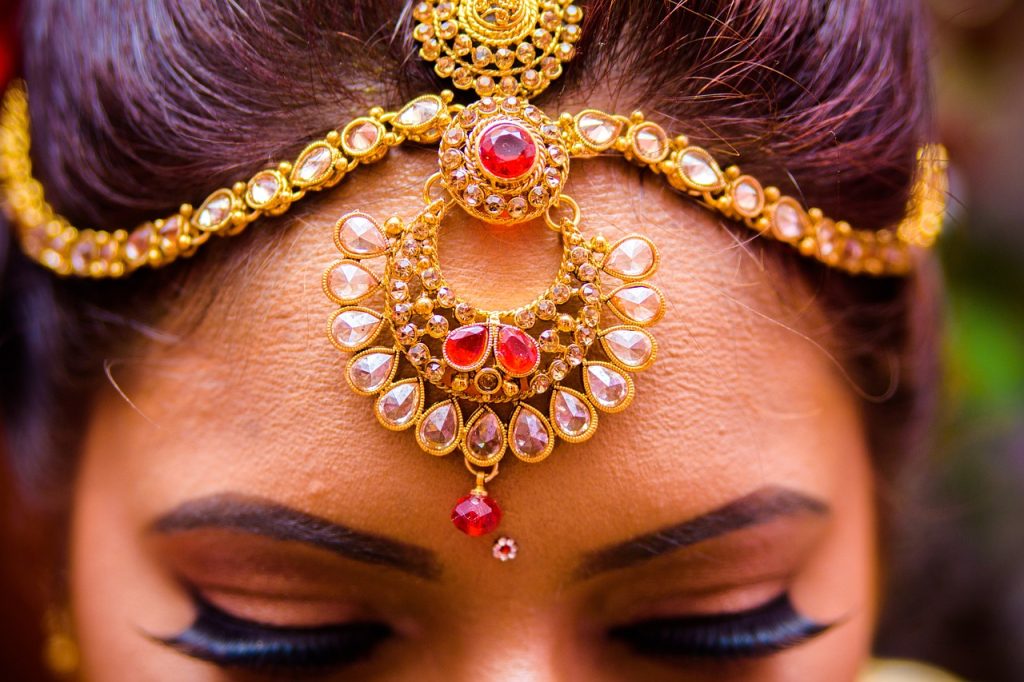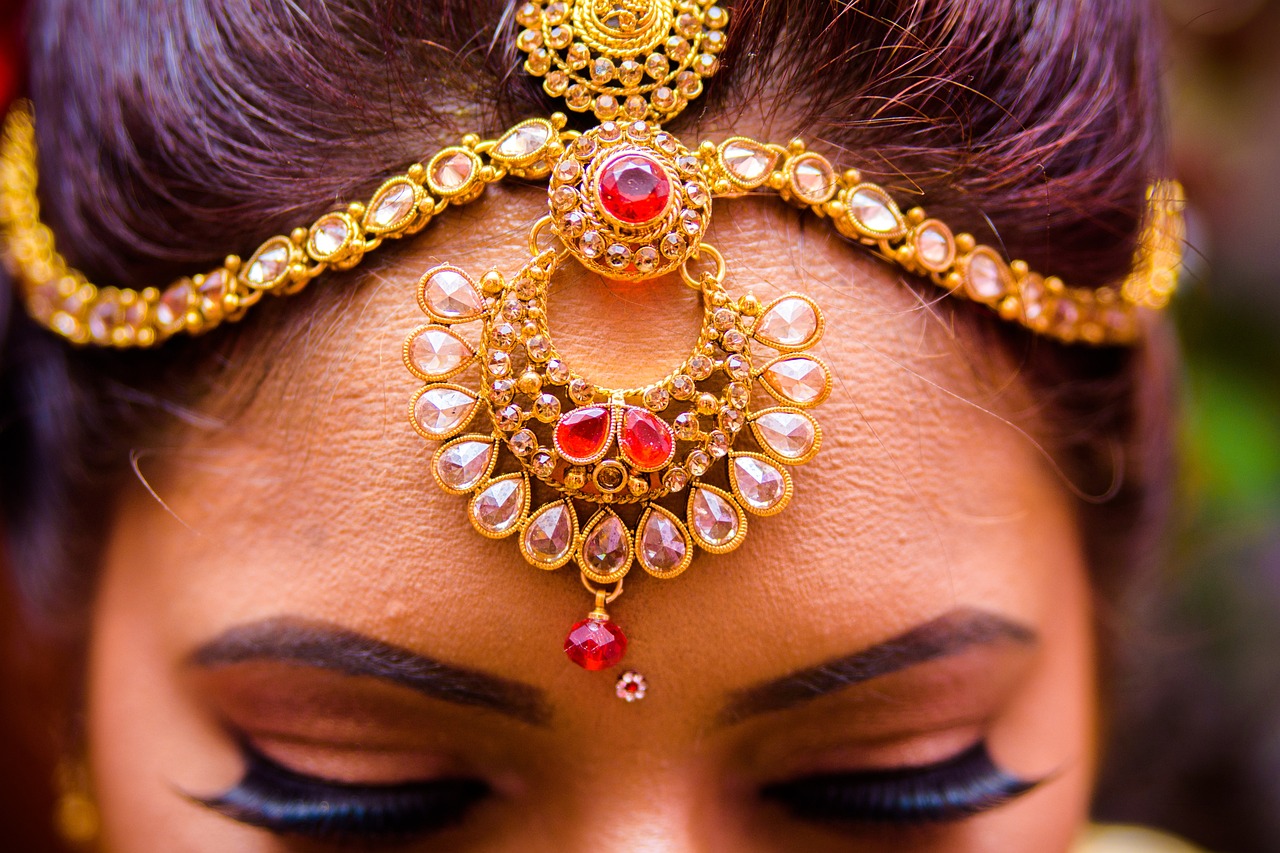Intricate and vibrant Indian bangles are more than just jewelry; they hold a deeper significance within the rich cultural tapestry of India. These beautiful accessories have been an integral part of Indian traditions for centuries, symbolizing a myriad of emotions, beliefs, and milestones. From warding off evil spirits to signifying marital status, Indian bangles captivate us with their fascinating meanings, connecting us to the ancient traditions and values of this diverse nation.
BAGSMART Travel Jewelry Organizer Case Foldable Small Jewelry Roll for Journey Rings, Necklaces, Earrings, Bracelets,Mini,Soft Pink
$15.99 (as of December 19, 2025 19:13 GMT +00:00 - More infoProduct prices and availability are accurate as of the date/time indicated and are subject to change. Any price and availability information displayed on [relevant Amazon Site(s), as applicable] at the time of purchase will apply to the purchase of this product.)Benevolence LA Plush Velvet Jewelry Box | Travel Jewelry Case Organizer with Mirror | Featured in Oprah's Favorite Things | Best Gifts For Daughter, Girlfriend, Mom | Gifts For Her - Emerald
20% OffGiggle & Honey Musical Jewelry Box for Girls - Kids Jewelry Box, Unicorn Toys for Girls 4-6, Unicorn Gifts, 6 x 4.7 x 3.5 in
$16.99 (as of December 19, 2025 19:38 GMT +00:00 - More infoProduct prices and availability are accurate as of the date/time indicated and are subject to change. Any price and availability information displayed on [relevant Amazon Site(s), as applicable] at the time of purchase will apply to the purchase of this product.)SONGMICS Jewelry Box Organizer with Glass Lid, 3-Layer Jewelry Storage, with 2 Drawers, Modern Style, Christmas Gift, 8 x 9.1 x 5.3 Inches, Cloud White and Gold Color UJBC239WT
23% Offpickpiff Jewelry Stand Holder Organizer: 14.5" Sturdy Hanger for 80 Pcs Jewelry, Gift for Women, Gold Jewlery Tower for Necklace, Earring, Bracelet
$17.99 (as of December 19, 2025 19:13 GMT +00:00 - More infoProduct prices and availability are accurate as of the date/time indicated and are subject to change. Any price and availability information displayed on [relevant Amazon Site(s), as applicable] at the time of purchase will apply to the purchase of this product.)
Culture and Tradition
Significance in Indian Culture
Bangles hold immense significance in Indian culture. They are considered an integral part of a woman’s identity and are deeply rooted in traditional customs and rituals. Bangles are not only a fashion accessory but also a symbol of marital status, femininity, and prosperity. They have been worn for centuries and continue to play a vital role in Indian celebrations and festivals.
Symbolism in Traditional Rituals
In Indian culture, bangles symbolize various aspects of a woman’s life. During weddings, the bride-to-be adorns herself with a multitude of bangles, each representing a different phase of her life. Red and green bangles are worn to signify fertility and prosperity while gold bangles symbolize wealth and marital bliss. Bangles also hold religious significance and are often used in rituals and ceremonies, representing spirituality and devotion.
Role in Celebrations and Festivals
Indian festivals are incomplete without the vibrant presence of bangles. During festivals like Diwali and Karva Chauth, women adorn themselves with intricately designed bangles in bright colors to enhance their festive attire. It is believed that wearing bangles brings good luck and prosperity. The jingling sound of bangles is considered auspicious and adds to the joyous atmosphere of celebrations.
Variety and Types
Different Materials Used
Indian bangles are crafted using a wide range of materials. These include glass, metal, lac, shell, wood, and even precious gemstones. Glass bangles are popular for their vibrant colors and delicate craftsmanship. Metal bangles, often made of brass or silver, are known for their durability and traditional designs. Lac bangles are made by coating a wooden base with layers of lac, creating beautiful patterns and textures.
Intricate Designs and Styles
Indian bangles are renowned for their intricate designs and styles. From the delicate filigree work of gold bangles to the colorful patterns of glass bangles, each piece showcases the skilled craftsmanship of Indian artisans. Intricate motifs such as paisley, flowers, leaves, and geometric patterns are commonly seen in bangle designs, adding a touch of elegance and charm.
Regional Variations
Each region in India has its own unique style and variation of bangles. For example, the state of Rajasthan is famous for its lac bangles adorned with vibrant mirror work and meenakari designs. On the other hand, the state of Gujarat is known for its intricate gold-plated bangles with floral and peacock motifs. These regional variations reflect the diversity of Indian culture and traditions.
Marriage and Womanhood
Importance in Weddings
Bangles play a pivotal role in Indian weddings, symbolizing the sacred institution of marriage. The bride’s wedding attire is incomplete without a stack of bangles on her wrists. It is believed that these bangles bring prosperity, harmony, and happiness to the newlyweds’ life. The sound produced by the bangles is considered auspicious and is believed to ward off evil spirits.
Symbolic Representations
In Indian society, bangles symbolize womanhood and are associated with the transition from a girl to a married woman. The red and white bangles worn by married women signify their marital status and are considered a sign of commitment and devotion. The breaking of glass bangles during the wedding ceremony is considered auspicious and represents the breaking of any negative energy or obstacles in the bride’s life.
Significance for Married Women
For married women, wearing bangles is not just a fashion statement but a reflection of their marital status and tradition. It is believed that bangles bring good fortune, protect the family, and strengthen the bond between husband and wife. Married women wear bangles made of different metals and colors, each having its own significance in maintaining a harmonious and prosperous married life.
Protection and Good Luck
Belief in Warding off Evil
Bangles are believed to possess the power to ward off evil spirits and protect the wearer from negativity. It is believed that the sound produced by the bangles creates positive vibrations, dispelling any negative energy. They are often worn by women during festivals, weddings, and other auspicious occasions to ensure protection and invite good luck.
Superstitious Beliefs
Superstitions surrounding bangles are prevalent in Indian culture. It is believed that if a glass bangle breaks, it signifies the end of misfortune or negative energy. On the other hand, if a gold bangle breaks, it is considered a foreboding sign and is thought to indicate impending financial difficulties. These superstitious beliefs add to the mystique and significance of bangles in Indian culture.
Bangle Color and Significance
The color of bangles also holds significance in Indian culture. Red bangles symbolize love, while green bangles are associated with fertility and prosperity. Gold bangles represent wealth and abundance. Each color carries its own symbolism and is chosen based on the occasion or personal preference. The choice of bangle color is seen as a reflection of the wearer’s desires, aspirations, and cultural beliefs.

Fashion and Adornment
Statement Accessories
Bangles are not only an essential part of Indian attire but also a statement accessory that adds grace and beauty to any outfit. They can elevate a simple outfit and instantly make it look more vibrant and festive. With the availability of a wide range of designs, colors, and materials, bangles can be customized to match individual style preferences and fashion trends.
Symbol of Femininity
Bangles are considered an embodiment of femininity and grace. They enhance a woman’s beauty and add a touch of elegance to her ensemble. The delicate sound produced by bangles as they move serves as a reminder of a woman’s presence and femininity. The act of wearing bangles is seen as a celebration of womanhood and an affirmation of one’s identity.
Trends and Modern Styling
While traditional designs continue to hold their charm, Indian bangles have also evolved to cater to modern fashion trends. Contemporary designs incorporate elements of fusion, combining traditional craftsmanship with modern aesthetics. Bangles made from unconventional materials, such as acrylic and ceramic, have gained popularity among the younger generation, offering a fresh and contemporary twist to this age-old tradition.
Social and Economic Status
Class Distinction
In Indian society, the type of bangles worn often reflects one’s social and economic status. Gold bangles are considered a symbol of wealth and affluence, demonstrating the high social standing of the wearer. On the other hand, glass bangles are more affordable and commonly worn by women from lower socioeconomic backgrounds. Bangles have historically been used to signify one’s position in society.
Influence of Bangles on Status
The presence of bangles can influence the perception of a woman’s social status. Traditional and ornate bangles are often associated with higher status individuals, while simpler bangles may be seen as a reflection of a more modest lifestyle. The choice of bangles can become a means of self-expression and a way to project one’s social status to the outside world.
Historical Role in Wealth Display
Throughout history, the display of bangles has been a way for families to showcase their wealth and prosperity. In royal households, elaborate and intricate gold bangles were considered a status symbol, worn by noblewomen to signify their privileged position. The craftsmanship and materials used in bangle-making were indicators of a family’s affluence and their ability to afford such luxurious adornments.

Symbol of Strength
Resilience and Endurance
Bangles, with their sturdy construction and enduring nature, symbolize the strength and resilience of women. They withstand the test of time, just as women endure and overcome various challenges in their lives. By wearing bangles, women not only embrace their inner strength but also inspire others with their perseverance and ability to rise above adversity.
Empowerment and Independence
Bangles have become a symbol of empowerment and independence for many women. They serve as a constant reminder of the strength and capabilities that lie within them. By wearing bangles, women embrace their individuality and assert their independence, reinforcing the notion that they are in control of their own lives and destinies.
Historical Significance
Throughout history, bangles have played a significant role in the empowerment of women. They have been worn by queens, warriors, and revolutionaries, symbolizing their strength, courage, and determination to challenge societal norms. Bangles have served as a tangible reminder of women’s contributions to history and their inherent ability to shape their own destinies.
Cultural Exchange and Global Appeal
Export of Indian Bangles
Indian bangles have gained international recognition for their exquisite designs and craftsmanship. They have become sought-after accessories, exported to various countries around the world. The beauty and uniqueness of Indian bangles have captured the attention of global fashion markets, contributing to the promotion and preservation of this traditional art form.
Integration of Bangles in International Fashion
Indian bangles have permeated the global fashion scene, becoming an integral part of international fashion trends. Fashion designers from around the world incorporate Indian bangles into their collections, creating a fusion of traditional and modern styles. This cross-cultural exchange not only promotes cultural diversity but also allows for the appreciation of Indian craftsmanship on a global scale.
Cross-Cultural Adaptation
Indian bangles have been embraced by individuals from different cultural backgrounds, serving as a testament to their universal appeal. They are no longer confined to traditional Indian attire but have found their way into contemporary fashion, being paired with Western outfits as statement pieces. This cross-cultural adaptation highlights the versatility and adaptability of Indian bangles in the ever-evolving world of fashion.

Art and Craftsmanship
Skilled Artistry
The creation of Indian bangles involves a meticulous and intricate process that requires skilled craftsmanship. Artisans with generations of expertise painstakingly handcraft each bangle, paying close attention to detail and precision. This artistry is passed down from one generation to another, preserving the traditional techniques and ensuring the continuation of this ancient craft.
Bangle Making Techniques
The techniques used in bangle making vary depending on the material being used. Glass bangles are made through a process called glass blowing, where molten glass is shaped into cylindrical forms. Metal bangles require intricate metalworking techniques such as filigree work, engraving, and stone setting. The process of making lac bangles involves applying layers of lac resin on a wooden base, which is then shaped and embellished with various decorative elements.
Preservation of Traditional Crafts
Efforts are being made to preserve and promote traditional bangle-making crafts in India. Artisan communities, cooperatives, and organizations are working towards the preservation and revival of these traditional skills, providing training and support to young artisans. The recognition of bangle making as an art form and its inclusion in various cultural initiatives ensures that this rich heritage continues to thrive for generations to come.
Revival and Revitalization
Efforts to Sustain the Tradition
Recognizing the importance of Indian bangles in cultural heritage, various initiatives have been undertaken to sustain this tradition. Art and craft organizations collaborate with artisans to provide them with fair wages, market access, and design inputs. These efforts help revive declining crafts and ensure the economic empowerment of artisans, preserving their traditional practices and ensuring the continuity of bangle-making traditions.
Artisan Empowerment
Efforts to sustain the tradition of bangle making also involve empowering artisans with the necessary skills, resources, and market exposure. Artisan cooperatives and organizations collaborate with designers to create contemporary designs that appeal to a wider audience. This collaboration not only helps artisans adapt to changing market trends but also allows them to showcase their craftsmanship and earn a livelihood.
Contemporary Designs with Traditional Roots
To cater to evolving consumer preferences, contemporary designs with traditional roots are gaining popularity. Designers are innovatively incorporating traditional motifs and techniques into modern bangle designs, creating a fusion that preserves the cultural roots while appealing to a wider audience. These contemporary designs serve as a bridge between tradition and modernity, ensuring the relevance and longevity of this timeless tradition.
In conclusion, Indian bangles hold immense cultural and traditional significance. They symbolize various aspects including marital status, femininity, protection, and good luck. Bangles are not only fashion accessories but also statements of empowerment and strength. With their intricate designs and skilled craftsmanship, Indian bangles have become internationally recognized and integrated into global fashion trends. Efforts are being made to sustain and revitalize the tradition of bangle making, ensuring its preservation for future generations. The artistry and cultural heritage associated with Indian bangles make them a timeless symbol of Indian culture and femininity.































